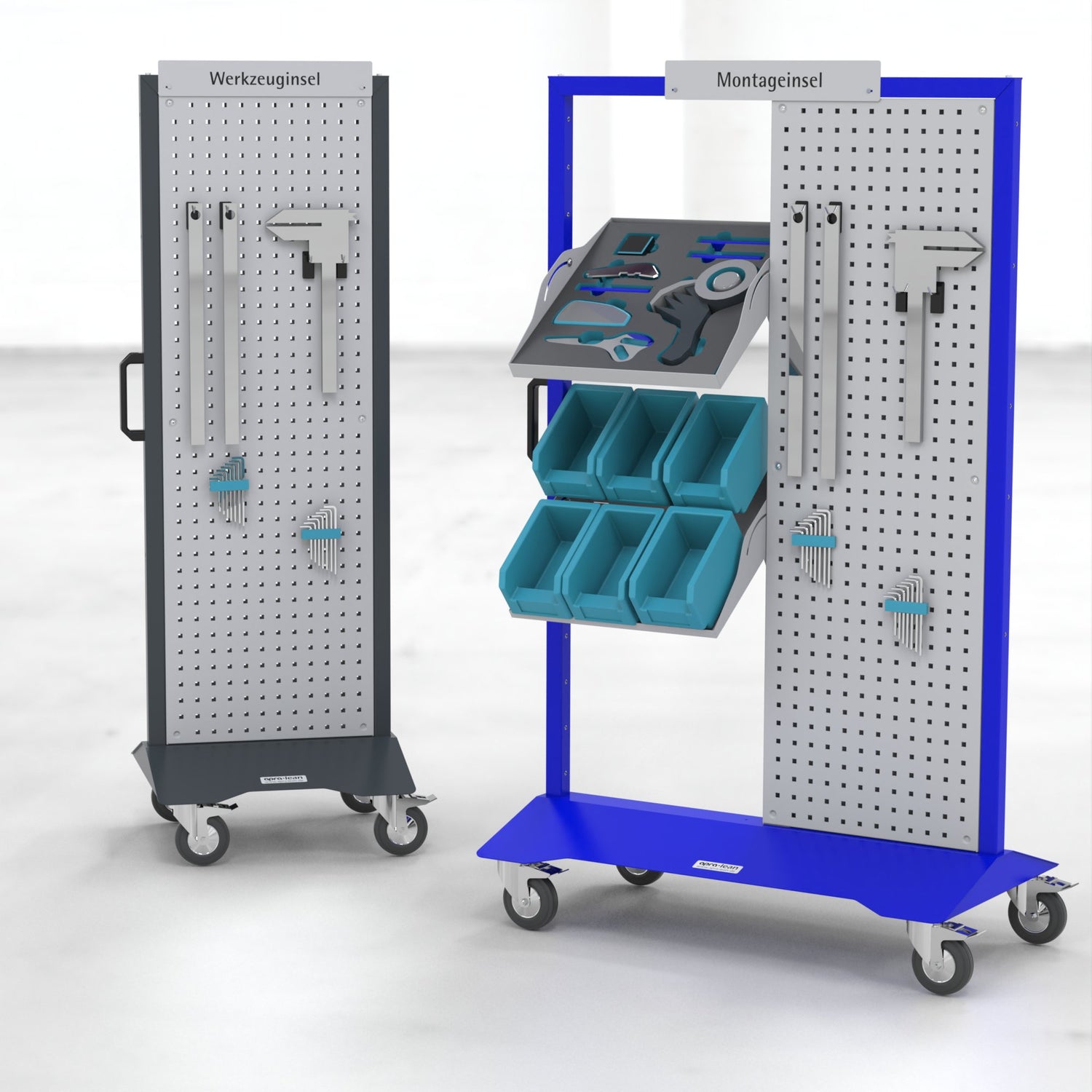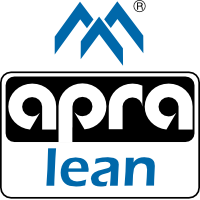
The 5S method is a systematic approach to organising your own working environment and can be classified as lean management. The aim is to minimise any kind of waste, i.e. non-value-adding activities, by organising the workplace in a structured way. Originally, the five ‘S's’ are derived from the Japanese terms Seiri, Seiton, Seiso, Seiketsu and Shitsuke. Translated into English, they describe the steps of the 5S method: Sort, Set in order, Shine, Standardize and Sustain.
In Sort (Seiri), all elements that are not required for carrying out a work step are removed. Sorting out creates more space for work equipment and materials that are actually needed, which increases clarity at the workplace.
The arrangement of tools, equipment and materials at the workplace is then Set in order (Seiton). Attention is paid to ergonomics, frequency of use and sequence. The work equipment and the appropriate storage locations are labelled in such a way that a clear assignment is recognisable and deviations from the target condition quickly become visible.
The Shine (Seiso) of the workplace not only serves to ensure hygiene, but should also be used as an inspection during which deviations from the target condition and defects in work equipment can be identified. The causes of soiling should be addressed and, if possible, sustainably reduced and ideally eliminated.
The fourth S stands for the Standardize (seiketsu) of work areas in order to enable employees to change jobs without a period of familiarisation and searching or reorientation. Standardisation concerns, for example, the arrangement of work equipment or the uniform use of labelling or colour codes across workstations. To document deviations, 5S audit forms or checklists can be created.
The last step is characterised by Sustain (shitsuke), because only with self-discipline can all rules be adhered to and processes systematically monitored and continuously improved without falling back into old behaviours.
The 5S method is not a one-off action, but a long-term concept in the sense of the continuous improvement process (CIP), which must be firmly anchored in the corporate culture and integrated into the day-to-day work of employees.
Our products
-

5S Cleaning and Hygiene
Cleaning stations for production, workshops and officesThe apra-lean cleaning stations offer an...
-

5S Production / 5S Assembly
Process stations for production and assemblyThe apra-lean process stations are compact and...
-

Shopfloor Management and Workshop
The shop floor station is a mobile information board for use in...
-

First aid and Safety
Safety and a quick response option in the event of emergencies in...
-

Customised solutions
Wir entwickeln gemeinsam die perfekte Lösung für Ihre Anforderungen!
- Choosing a selection results in a full page refresh.
- Opens in a new window.






